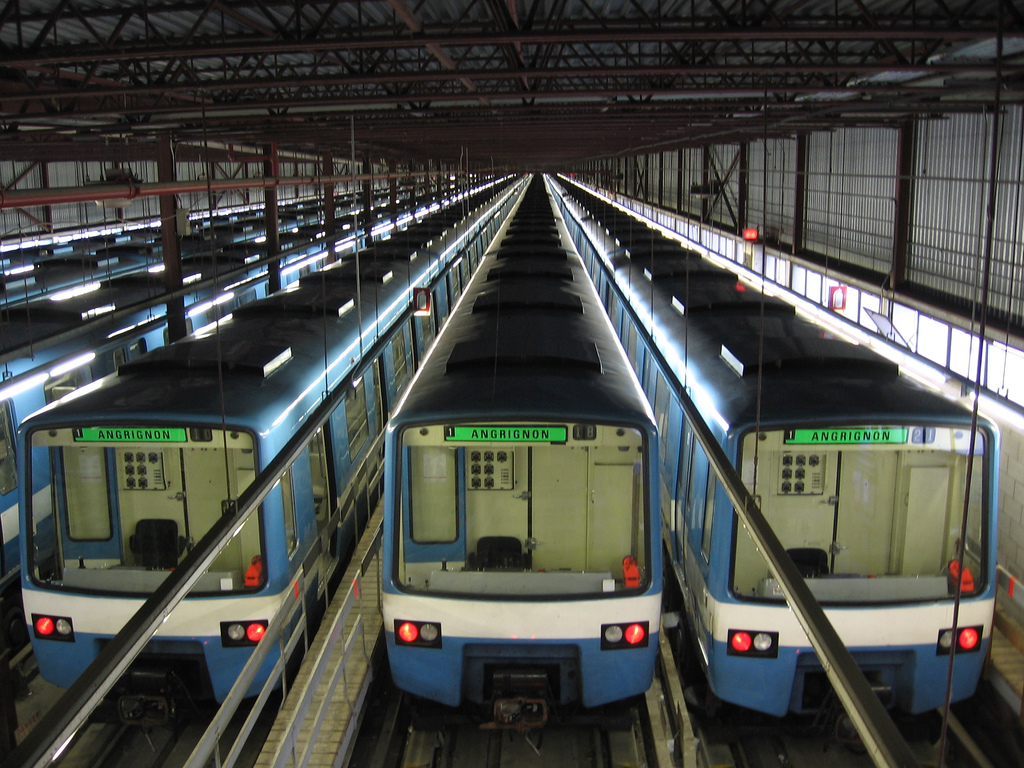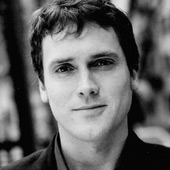
The rubber tires of the Montreal Metro
“Noise, however, reaching us in a confused and irregular way from the irregular confusion of our life, never entirely reveals itself to us, and therefore keeps innumerable surprises in reserve.” — Luigi Russolo, The Art of Noises, 1913
Many years ago, during a summer job, I was spray-painting the inside of an industrial building. Unfortunately, as I was to learn, the site was not properly ventilated. Gradually, without my being aware, the fumes began getting to me, through the mask. And an astonishing thing happened: Out of the throbbing white-noise hum of a nearby cooling unit, I began to hear voices. They weren’t saying anything; rather it was as if some kind of primal chorus was simply chanting, over and over, in some language I couldn’t quite decipher. I began to recognize distinct patterns in these dronings, and I felt myself being drawn in deeper, looking for some kind of meaning. As a strange metallic taste rose in my mouth, I sensed it was time to get out.
Recently, standing on the platform of the Place d’Armes Metro in Montreal, I had a similar, if less hallucinogenic, moment, where I suspected I might be hearing things that were not there. I’ve been spending the month in Montreal with the Canadian Center for Architecture and as such, I’ve become a regular morning commuter on the city’s splendid Metro—the first in the world to employ only rubber tires on its cars.

It didn’t take long for me to notice, as the trains departed, a curious trilogy of tones that echoed, along with the hum of the engine, through the concrete-chambered station. At first, I confused it with some kind of spritely closing-door chime. But the sounds only began as the Metro was in motion. I also found that, trip after trip; I was maddeningly unable to resist completing a song in my head. My mind was going off the rails. The notes, I realized with a start, were the beginning of Aaron Copland’s Fanfare for the Common Man.
On the Internet, I soon learned, this phenomenon has been duly observed, particularly by obsessive train geeks. But it’s not the sort of thing someone immediately tells you upon arriving in Montreal. I was loath to pull someone aside and ask, conspiratorially, if they too were hearing this strange pattern out of the engine noise. Indeed, some people I spoke to were only vaguely aware of the tones themselves, and certainly not the Copland connection.
Fanfare for the Common Man, one of the most famous pieces of 20th century American music, is a kind of poetically appropriate choice. As Alex Ross notes in The Rest is Noise, its title was drawn from a speech by New Deal firebrand Henry Wallace, “Century for the Common Man,” and if there’s any place for celebrating such a creature and such ideals it’s on the crowded platform of a grand municipal project. As music, moreover, it’s stirring and anthemic — in a quiet way, if that’s possible — and in the Metro it seems to bring a kind of heroism to the everyday departure. The composition, curiously, has found its way, as Ross notes, into things like Queen’s “We Will Rock You” (indeed, it seems to be a favorite of pretentious arena-rockers everywhere, from Styx to Asia to ELP (someone here will no doubt want to utter that classic dorm-room refrain: Those guys are classically trained!), and has been a natural for cooptation by sports broadcasts.
But how did it get into the Montreal Metro? As I was told by David Slack, a representative of Bombardier, the Montreal-based transportation giant (they make NYC’s subway cars), it is only certain cars — the “MR-73s” — in Montreal that generate these sounds. And only certain cars on those trains — six out of nine — actually make the sounds. These six cars have traction motors and something called a “Direct Current Chopper.”
As Mr. Slack explained it to me, the traction motors get power from an electronic controller, or “chopper,” that produces interrupted pulses (to prevent surges) of currents at different times and frequencies as the train accelerates. These pulses, however, produce as a by-product a range of “undesirable harmonics and noises.” As a fix, the project engineers incorporated a device in the electrical circuit to filter out the “unwanted harmonics.” But some “residual harmonics” are left (including some that we can’t make out), which are the tones that are heard today. “The fact that the remaining tones resemble music or Copland’s piece is purely coincidental,” Slack said. “They are somewhat pleasant, though, so the project engineers chose to leave this interesting characteristic intact during design of the trains.”
How I would have liked to have been in on that process, as engineers sat listening to the various combinations that must have been possible out of the range of sounds. What atonal combinations were discarded, lest they inflect daily pain on the ears of commuters? And what are the chances, really, that those particular sounds would be lurking, in succession, in this electrical process? Was there a Copland fan amidst the ranks? And what are the chances, further, that this would happen in a city whose Expo ’67 — a year after the Metro debuted — featured as one of its theme songs Fanfare for the Common Man?
This raises the interesting possibility that, had things gone another way, it could have been Aaron Copland who heard the combination of tones generated by the inner harmonics of this machine, and was thus inspired to write a composition based on these patterns. Of course, the sound of the train as such, runs through blues, jazz, and all sorts of music; Robert Browning, in Christmas-Eve and Easter Day, wrote, “a tune was born in my head last week/ Out of the thump-thump and shriek-shriek/ Of the train, as I came by it, up from Manchester.”

Montreal Metro. Photo ©Copyright F-i-L.
But the idea of music being generated through the manipulation of a machine or its power source invokes something else — the whole prehistory of electronic music, from the Futurist’s celebration of industrial noise (“the sleek flight of planes whose propellers chatter in the wind like banners and seem to cheer like an enthusiastic crowd”), to the discoveries of William Duddell, the Victorian-era electrical engineer who, charged with finding a way to reduce the humming of carbon-arc street lamps in London, found he could create audible frequencies by changing voltage. By attaching a keyboard of sorts to the lamp, his so-called “singing arc” created, in essence, electronic music — in one demonstration, the device actually triggered nearby arc lamps to sound the same tones.
The most germane comparison may be the great avant-garde composer (and seminal remixer and turntablist), Pierre Schaeffer, creator of the so-called musique concrète, or “music taken from an existing collection of experimental sounds.” His Etude aux Chemins de Fer, or “study in locomotives,” was based on recordings from the Gare des Batignolles in Paris, everything from the clacking of the rails to the train whistles (Steve Reich would later incorporate whistles, powerfully, in Different Trains). One of Schaeffer’s interests was so-called “musique acousmatique,” which he defined as “referring to a sound that one hears without seeing the causes behind it.” The Montreal Metro presents a kind of black box; we sense where the sound is coming from, but not why or how. It seems appropriately modernist, its form generated from function.
Like the call of the muezzin in Marrakech or the inescapable cry of irasshaimase! upon entering a store or restaurant in Tokyo, I suspect I shall now always associate Montreal in my mind when I hear the Fanfare — an electro-acoustic echo of Browning’s line, “my head will sing to the engine’s clack again.” As it happens, though, the new cars coming on line in the city have different “propulsion systems,” rendering those notes unnecessary. Whether the sound of those new systems commutes any meaning depends, I suppose, on the listener.


Comments [10]
The sounds almost give it a futuristic feel like George Lucas's THX 1138. You stand on the platform just waiting to see one of those
silver faced cops with the long cattle prod to tell you to move on.
10.29.08
03:27
Honda cut grooves in a road in California, to play part of the William Tell Overture, as cars drive over them.
http://www.youtube.com/watch?v=gxRgf5czTiM
10.30.08
01:35
10.30.08
02:20
A city is not solely defined by its sinage, skyline, sports teams, popular "eats," or weather. It's elements such as these unintentional music making trains (and the story behind them) that contribute to the definition and uniqueness of the city.
Interesting Article. Thanks!
10.30.08
03:41
10.30.08
03:51
10.31.08
04:07
I once heard it used in a song playing on the muzak at work where you hear the chime then the "metro voice" saying "prochain station, Rosemont" (or perhaps another station name, I don't remember for sure). The sound, very appropriately, was also incorporated into the song "il fait beau dans l'Métro" used in an advertisement for the Metro in the 1970's. You can watch it here:
http://ca.youtube.com/watch?v=DcC31r1BxBY
Great blog by the way!
11.09.08
01:13
http://ca.youtube.com/watch?v=fTwWzQSc0oI
11.11.08
06:26
12.07.08
01:09
10.12.09
03:47